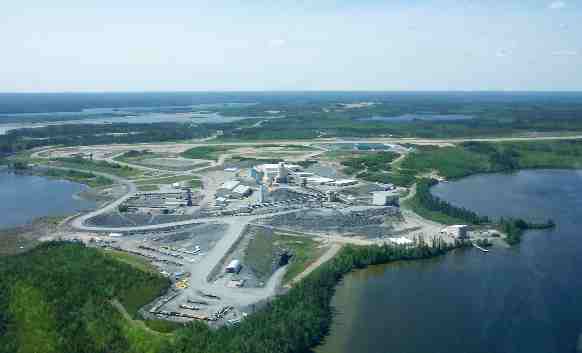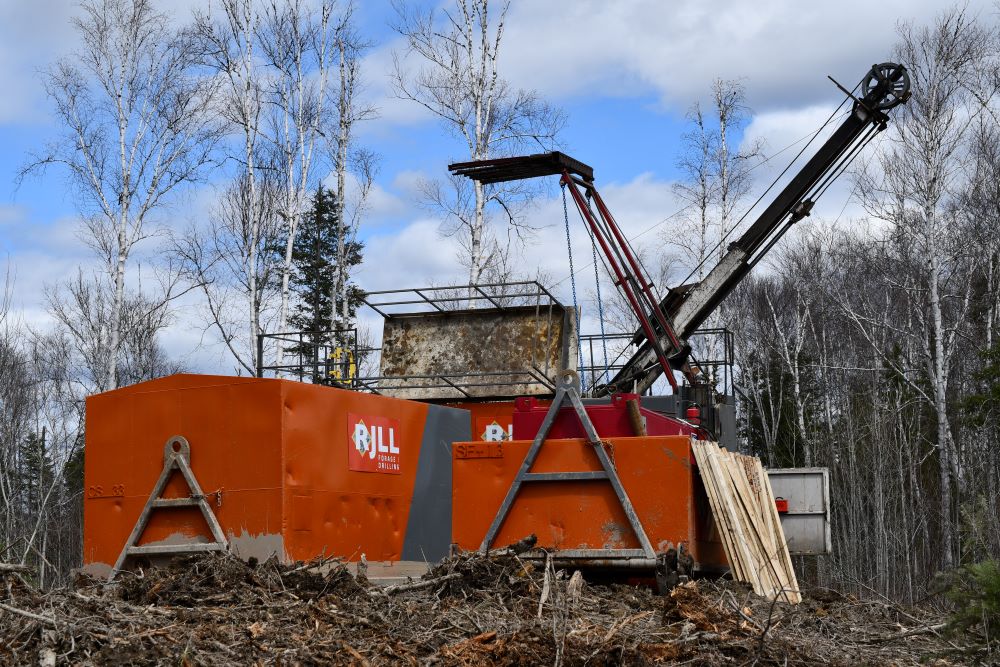Couplers offer sound solution
Hydrotransport, in which a highly abrasive mixture of bitumen, sand, rocks and water is transported through a pipeline to the extraction plant, is one of the primary transport methods in the oil sands.
The slurry, which moves through the line at speeds of up to 6 meters (20 feet) per second, acts as a sand paper, of sorts, resulting in heavy wear on the pipe-walls and fittings. Tailings lines, which contain the residual sand and water that are disposed of following the extraction process, also face the same wear problem. Together, these oilsands processes create one of the biggest maintenance issues in the oilsands industry.
The pipelines can only withstand this wear, known as erosion-corrosion, for a limited amount of time. To even out the wear on the pipe walls and extend the life of the system, the pipes are rotated on a regular basis. Unlined carbon steel pipelines are rotated every few weeks, while lined pipelines can go several months before rotation becomes necessary. Oilsands operators naturally plan for the downtime this maintenance requires but, nevertheless, it’s a problem that costs the industry billions of dollars every year. So finding ways to extend the life of the piping systems, reduce downtime, and reduce maintenance and replacement costs is critical.
Hydrotransport and tailings pipelines are typically constructed with spools of pipe, which themselves are comprised of sticks of pipe. The sticks, about 12 meters (40 feet) in length, are joined together to form a spool anywhere from about 36.5 to 73 meters in length (120 to 240 feet). To rotate the pipe, the spools are separated and a sling-boom system is used to lift and turn the entire spool.
Tradition has dictated that the sticks be welded together, and that the spools be joined with a mechanical method, such as a flange or coupling, to facilitate the pipe rotation. However, a new technology has emerged that radically improves pipe installation, maintenance and replacement procedures. The technology is grooved mechanical piping, which, although in use in the underground mining industry for decades, has only recently evolved to meet the challenges of the more demanding oilsands services.
A mining mainstay meets the Oilsands
High-pressure couplings for large-diameter abrasive piping systems were previously only available in a flexible style. The introduction of a rigid style that can be used in place of a welded joint was a major advancement in the technology, and made the use of these couplings on almost every hydrotransport or tailings line pipe joint a reality.
Like standard grooved pipe joints, the coupling housings encase a gasket and engage the groove around the circumference of the pipe to create a leak-tight seal in a self-restrained pipe joint. The difference is that the groove is situated in a specially designed ring that is butt-welded to the end of the pipe. By not grooving the pipe directly, the full pipe-wall thickness is maintained, which is vital given the abrasive nature of the service.
When used in place of flanged joints between spools of pipe, and welded joints between sticks of pipe, couplings offer operators several key advantages, including reduced downtime, improved strength, and cost savings.
Reduced Downtime
Couplings have proven to be faster and easier to install and rotate than flanges. The speed of installation and rotation is apparent when a four-bolt coupling is compared to a 32-bolt flange (typical of a flange in the 30-inch size range). When rotation becomes necessary, couplings provide 360 degrees of rotational allowance. A flange restricts rotation to the alignment of the bolt holes. Depending on wear patterns, couplings may increase the service life of the pipe by taking advantage of smaller rotations.
Couplings also offer faster initial installation and a much more maintainable system than welded pipe joints. Welding is a time-consuming process requiring a highly skilled labourer. On large pipe joints such as those typical of hydrotransport and tailings lines, a single joint could take several hours to weld, whereas the assembly of a grooved joint could be completed in less than one hour. In fact, time savings using a mechanical coupling rather than welding can be as high as 75 percent.
A coupling provides a union at every joint, whereas welding creates one continuous piece of pipe. This is a disadvantage because the full welded pipe spool would need to be replaced if a problem arises within the line. When couplings are used between sticks of pipe, operators have the ability to replace a single length of pipe, rather than remove the whole spool from service.
Couplings’ ability to speed initial installation and reduce maintenance downtime means operations start or resume quicker, ultimately generating more revenue. When it’s time to replace the systems altogether, which can happen on an annual or biennial basis, the piping can be changed out quickly, again resulting in reduced downtime.
Strength
High-pressure couplings for large-diameter abrasive piping systems, such as the Style 207 and Style 277 couplings from Victaulic, create a more robust pipe joint than a flange. These specially designed couplings, which have stronger bending and sheer load capabilities than flanges, maintain a very high load capacity regardless of pressure. A flange’s loading capabilities drop quickly as the pressure increases.
Spools constructed with these high-pressure couplings at every joint match the lifting and handling capabilities of both welded and flanged systems. Moving the systems into place and rotating them is no different with grooved joints; pipe spools can be moved around on site with the couplings already assembled on the joints.
Cost Savings
Couplings are a more cost effective joining method because, unlike a flange, the gasket can be reused after the spool is rotated. The gasket between flanged pipe- ends can tear upon removal. In addition, couplings can be saved and reused when the pipe spools are replaced; flanges are thrown out with the spools.
The major expense associated with welding is labour. When pipe spools are replaced, welding must start from scratch. Materials, or the actual couplings, comprise the majority of a grooved system’s cost, but these can be reused, so replacement expenses are almost negligible when compared to welding.
And finally, specially designed oil sands couplings are faster and easier to install and rotate, create robust pipe joints that match the lifting and handling capabilities of other joining methods, offer a much more maintainable system and reduce overall costs.
Information for this article provided by Wayne Biery, Product Manager, Large Systems Division, Victaulic.





Comments